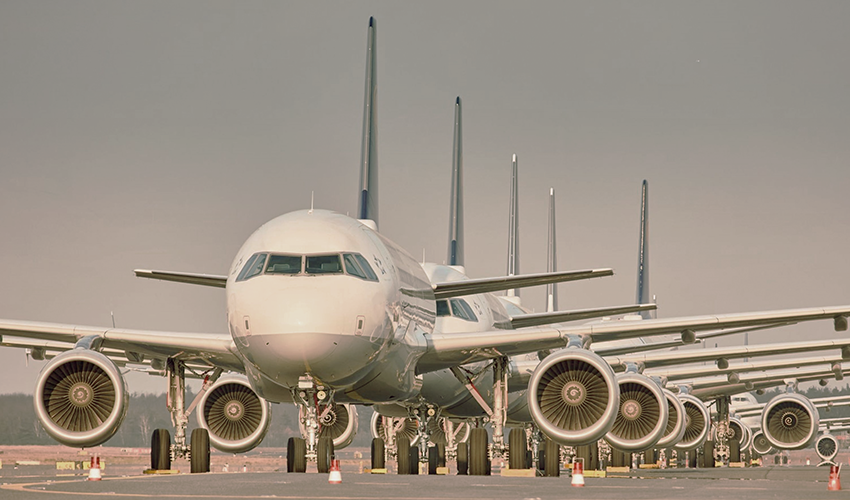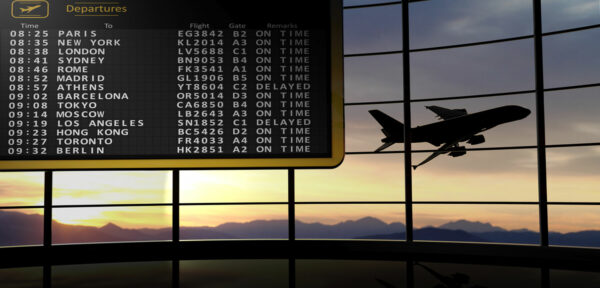Only a few weeks away from the start of the summer travel season 2021, the airline industry is preparing for an expected rebound in demand. The horizon looks promising: the widespread of vaccination and testing appears to be giving the public more confidence to fly again. According to a recent poll, 89% of the respondents agreed about the importance of standardizing procedures relating to impulse traveling. Moreover, 85% mentioned that governments had to set clear targets in this regard. But beyond the importance of these measures, there is a decisive factor driving passengers´ return: a change in mindset. It seems that the public is finally learning to live by managing the risks of a pandemic that might not disappear at all.
After months of enduring isolation, there is more than one reason for travelers to hope about taking a break later this year. Global headlines announce how countries are working on a roadmap to ease lockdown restrictions. This news seems to be positively impacting flight capacity. In fact, the Official Airline Guide (OAG) estimated an increase of nearly 58 million seats week-on-week by the second half of March. This is 54% below pre-pandemic capacity levels, but can be seen as a sign of an eventual recovery after weeks of decreasing capacity levels. Since travel restrictions and demand can change rapidly, planners have to remain cautious before adding more seats. They need to continuously adjust their schedules to reflect the latest variations.
Optimism is peaking around the industry which will have to develop strategies to cover upcoming demand, while ensuring passengers get back to the skies safely. The question is how?
Summer travel 2021: Getting ready to take off
1. Redefining the fleet: smaller, newer aircraft
The Coronavirus made itself felt as we noticed how carriers had to cut most of their flights mid-last year. Since then, decision makers have been looking at ways to preserve cash and keep as many aircraft in circulation as possible. Having hundreds of aircraft grounded instead of ferrying passengers has brought significant losses. These losses stem both from the commercial side of fewer flights, as well as the high maintenance costs and coordination efforts behind their storage. The Financial Times calculated parking costs around $30,000 per airplane, depending on the regime chosen. That gives us a good idea of how the high costs associated with maintaining the fleet so its airworthy.
With bookings still 50% of pre-crisis levels, it is foreseeable that businesses try to absorb such expenses. Given that the recovery of aviation is expected to be a long process, it is time to rethink the use of the fleet. The starting point for that is the evaluation of possible recovery scenarios. Early this year, the International Air Transport Association (IATA) noticed a trend of passengers shifting from long-haul to short-haul routes. Moreover, the data and analytics group YouGov confirmed this tendency in a recent study. Of the survey respondents, 44% revealed they would opt first for a domestic destination for the summer travel season 2021.
What does this mean for carriers? They can adjust the composition of the fleet they designate for flight by prioritizing smaller aircraft. Also, newer airplanes could take the lead as, in theory, they demand less frequent maintenance. The latest figures from OAG show that some airlines are already adapting by operating smaller planes. The Airbus 318/319/320/321 family happens to have gained market share, making up 41% of global capacity. While the use of smaller aircraft is predominantly higher among low-cost carriers, it does not preclude legacy carriers from their use also. It will depend on the ability of decision makers to reach the most optimal plane mix in their fleets.

2. Exploring new air service opportunities
It has never been more challenging to plan a network than today. With the pandemic outbreak, international and connecting journeys have been most affected by travel restrictions. The measures aimed to contain the virus have not only impacted airline operations, but also flight booking patterns. Last year, at the peak of the contagions, it was difficult to book a flight with full confidence that it would be operated. For this reason, people started to buy their flight tickets closer to the departure date. That brings to the table how crucial it is to do adaptative planning of flight schedules in order to regain passenger confidence.
Part of going forward means understanding new travel preferences and finding ways to cover them. For summer travel 2021, experts believe that travelers will decide on one destination based on quarantine requirements and local vaccination rates. And since domestic routes would be preferred over international ones, we can expect regional airports will gain more relevance. This can be a game-changing event for both spoke-to-hub and spoke-to-spoke travel. Carriers will then have to explore opportunities beyond their hubs, looking at cities where they once operated. Such assessments can trigger new partnerships and unveil alternative revenue streams.
3. Optimization of passenger connections
Offering passenger connections is a crucial part of any network carrier. Transit flights enable businesses to service routes that otherwise would not be profitable to operate. According to OAG, in 2019, 46% of passengers flying from the UK to the US made a connection during their journey. The fact that travelers have to stop off to change flights in order to complete their trip generates significant revenues for transfer airports. Ensuring efficiency in connecting traffic will be paramount in the recovery process as it directly impacts airline performance and customer satisfaction.
As the summer travel season 2021 approaches and demand increases, new challenges come for connecting times. More detailed inspection processes at security areas, for instance, can lead to longer queues and the risk that airplane departures are delayed while waiting for the last travelers to board. The mission for planners will be to analyze how the introduction of safety regulations can cause misconnections and include this into the scheduling process. With a dedicated software solution, decision makers can visualize all Origin and Destination connections and obtain alerts if changes are needed to save passenger connections. Among the questions that will need to be addressed are:
- Which are the important and critical flights today that need to leave on time?
- What impact will the delay of a handling step have on the departure time?
- What gate changes can potentially reduce transfer distances and save traveler connections?
- Which connecting passengers are likely to miss their connection and which are at risk?
- What cost-optimized rebooking options are available for these passengers?
- To what extent should additional staff be dispatched to help travelers making their connection?
Conclusion
After going from one lockdown to another, most people just want to get away and are pinning their hopes on the summer travel season 2021. Since the pandemic has not been fully contained yet, it becomes clear that the industry needs a plan to take people in an orderly, safe manner back to the skies. Carriers should be prepared to scale up safety protocols when needed without compromising operational efficiency. Managing connecting passengers will be crucial to avoid additional costs stemming from longer operating days and customer dissatisfaction.
The growing importance of domestic travel beyond holiday plans introduces new opportunities for airlines to reach unserved routes. A proper network analysis will help identify operational gaps and determine how aircraft can be best deployed to cover these routes. And if an airline is unable to provide sufficient capacity to meet the demand in other markets, exploring collaboration with other carriers can lead to win-win situations.
There is no golden formula to prepare for summer travel 2021. While some carriers plan to buy new and smaller planes, others may be focusing on training or adding additional staff. Strategies will vary according to each airline’s individual characteristic. But what is certain is that decisions made now will affect how smooth the path ahead will be to an eventual recovery.





0 comments on “Summer Travel 2021: How Can Airlines Prepare for Demand Take-off (vol. I)”